Adventures in San Crisobal de las Casas and the tribal village of San Juan Chamula
The word Zapatista was familiar, but I couldn’t say why. It conjured up positive connotations of fighting for freedom. Although it could have also referred to a brutal guerrilla movement. A great place to learn more is in the sleepy colonial town of San Cristobal de las Casas.
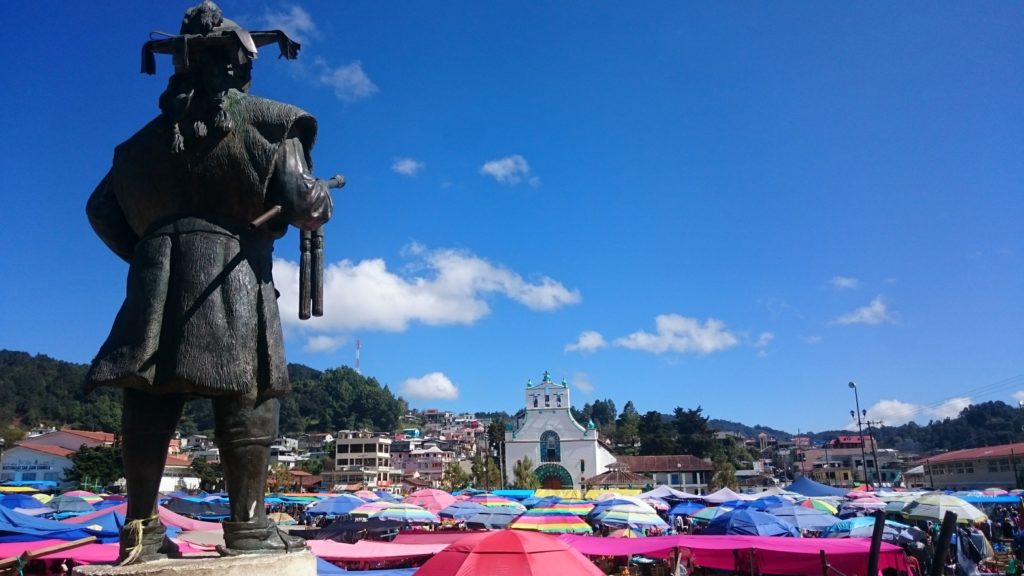
High up in the Chiapas mountains, San Cristobal de las Casas mixes the old world with the new. Modern bars and local restaurants line old cobbled streets. Clothing stores sit alongside traditional markets. Roman catholic churches are visible in every direction. It’s a great place to while away the hours, kick back and relax.
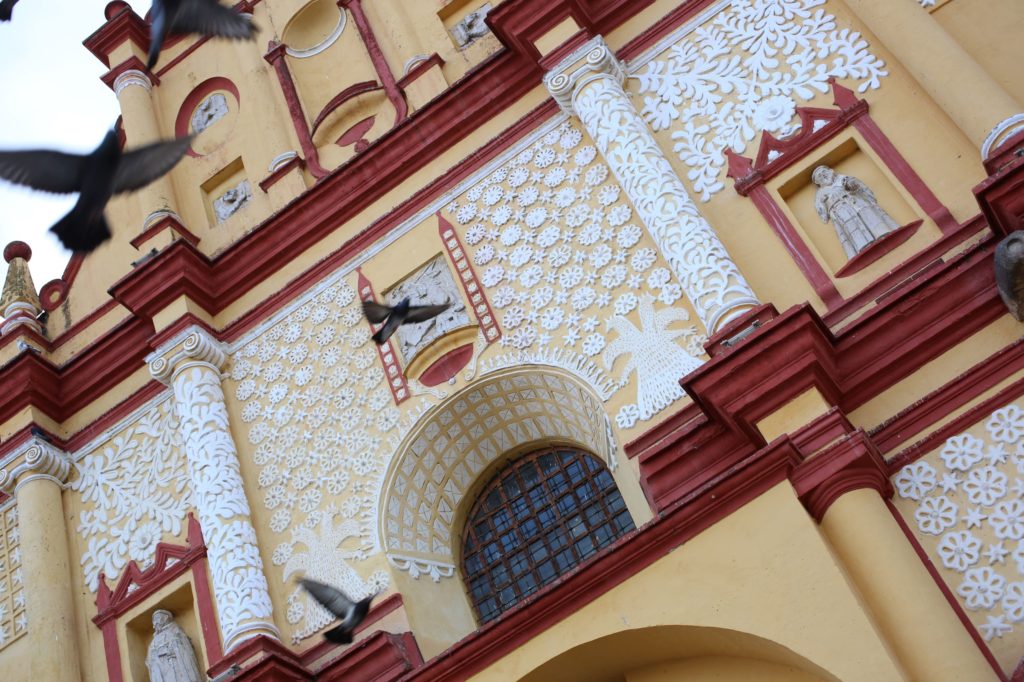
Our main reason for visiting was to experience the nearby village of San Juan Chamula. A place home to the indigenous Tzotzil and Tzeltal tribal groups.
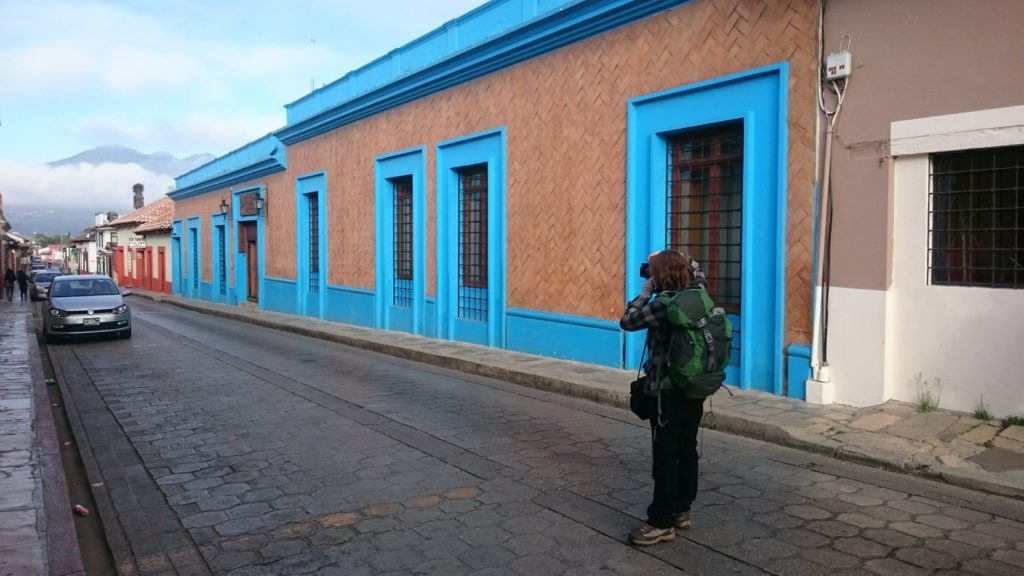

The Tzotzil and Tzelta (along with other tribes) have lived in the Chiapas region for between 1,500 – 2,000 years. The tribes have fought hard to keep their customs, follow their own religion and farm their lands. Yet Spanish conquistadors and the Mexican government have both played an active role in trying to steal it from them. A modern culture championing neoliberalism has also led to a decline in public support for indigenous customs.
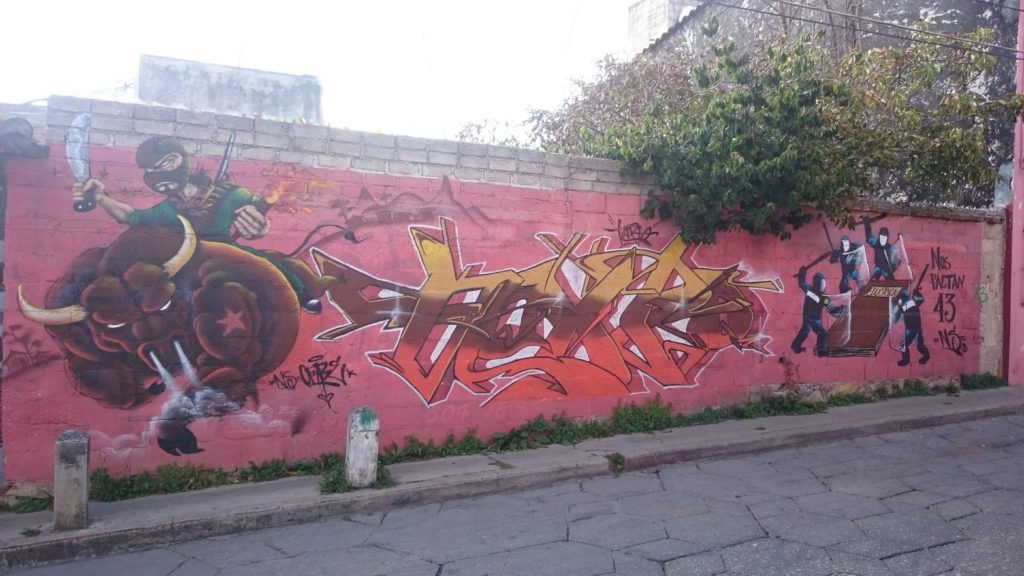
This developed into an uprising after Mexico signed NAFTA (the North American Freed Trade Agreement which created a trading bloc between Canada, USA and Mexico). On 1st January 1994 men and women took up arms alongside the EZLN ( Zapatista National Liberation Front; a group of rebels from indigenous communities) and siezed areas of the town. San Cristobal de las Casas has been autonomous ever since.
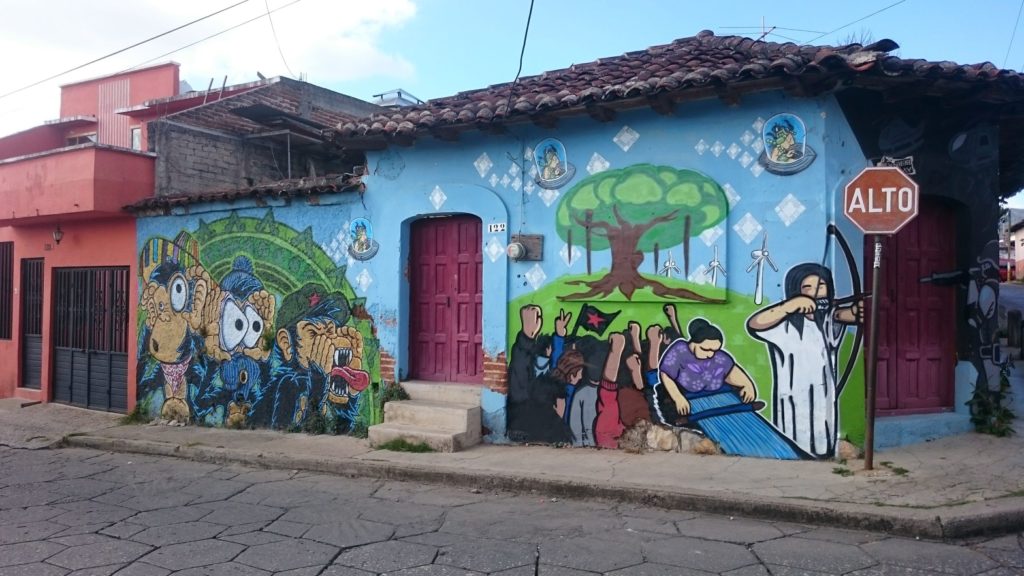
Zapatista villages aren’t open to visitors, but Alex and Raul Tours will take you to the town of San Juan Chamula and give you a glimpse in to the Tzotziles tribal way of life. Run by indigenous locals, the guides have direct experience of the uprisings and can take you to places others will never see. This an incredible experience.
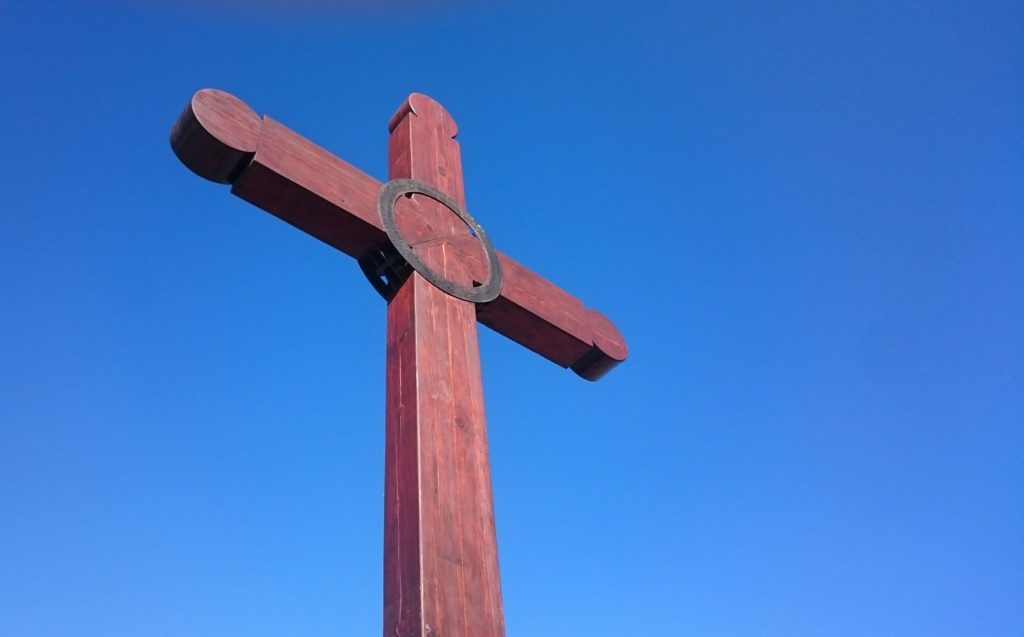
We met in the centre of town under the cross and travelled in a bemo for twenty minutes. Parking on a dusty hill outside of San Juan Chamula, the local school was our first visit. School was out, but we peered through the windows and saw posters of the English alphabet. The people have their own Mayan Tzotzil language and customs, but aren’t completely cut off from communication with the outside world.
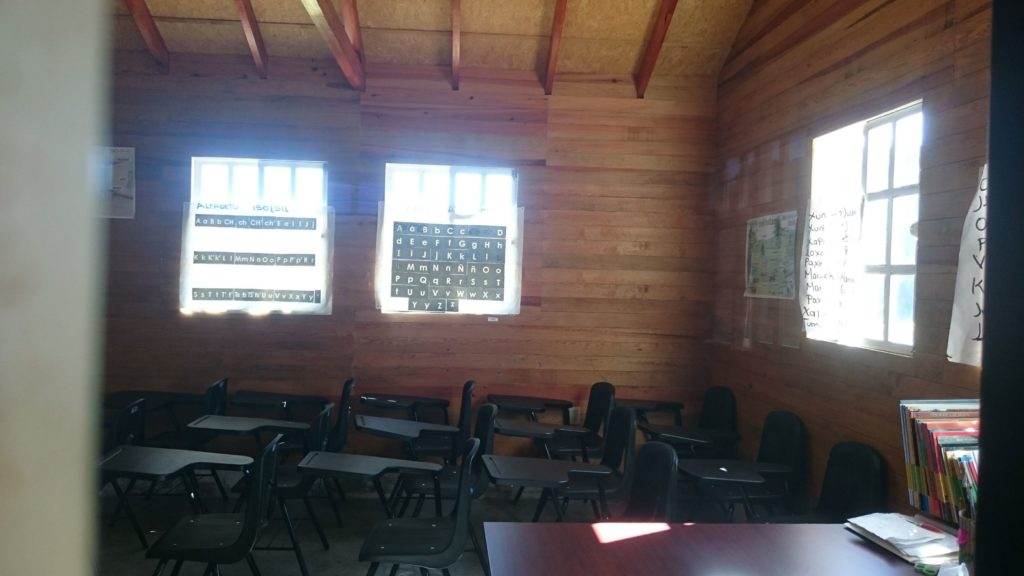
Scanning the horizon you could be mistaken for thinking this is a film set from The Good, The Bad and The Ugly. Like a classic western, shallow graves greet you at the entrance to the village.

Venturing in to town you’ll see the Tzotziles dress is very different to other Mexican towns. Immediately noticeable was that men dress all in white, with a wool poncho. To show who is in charge, the Tzotziles wear a sash which identifies their rank in society.
As our guide was form the area, the head of town invited us in to a house to sample the home brewed alcohol; Pulque. Fermented from the agave plant (which is also the main source of tequila), this strong milky spirit and can allegedly cause hallucinations. It was 11AM, so I settled for two shots!
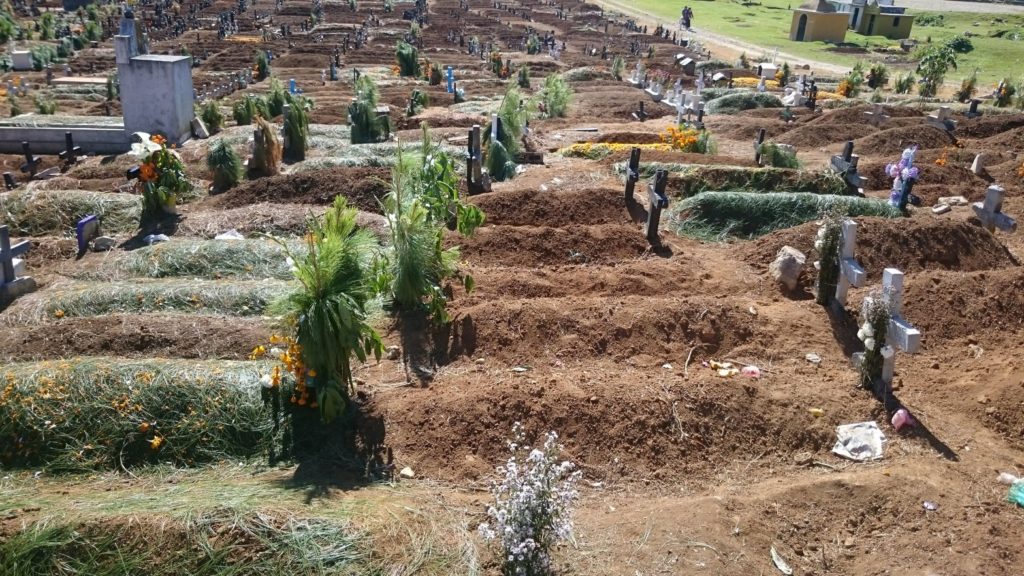
"People had got wind of corruption, so he was chased out of town and beaten to death!"
Moving on to the large market, we couldn’t help but notice a sudden armed police presence in the area. Back home in England the police don’t carry weapons. These guys had assault rifles! It’s not something we’re experienced with, so we were unsure whether to feel safe or be on edge waiting for it all to kick off. It turned out the police were from out of town. The Tzotziles have their own law enforcement in which all males must serve some time.
I asked why heavily armed police from out of town were in the area and it was due to recent problems with the town mayor. “People had got wind of corruption, so he was chased out of town and beaten to death!” Our guide shrugged and said “no one got caught. The police looked for them briefly and then gave up.”
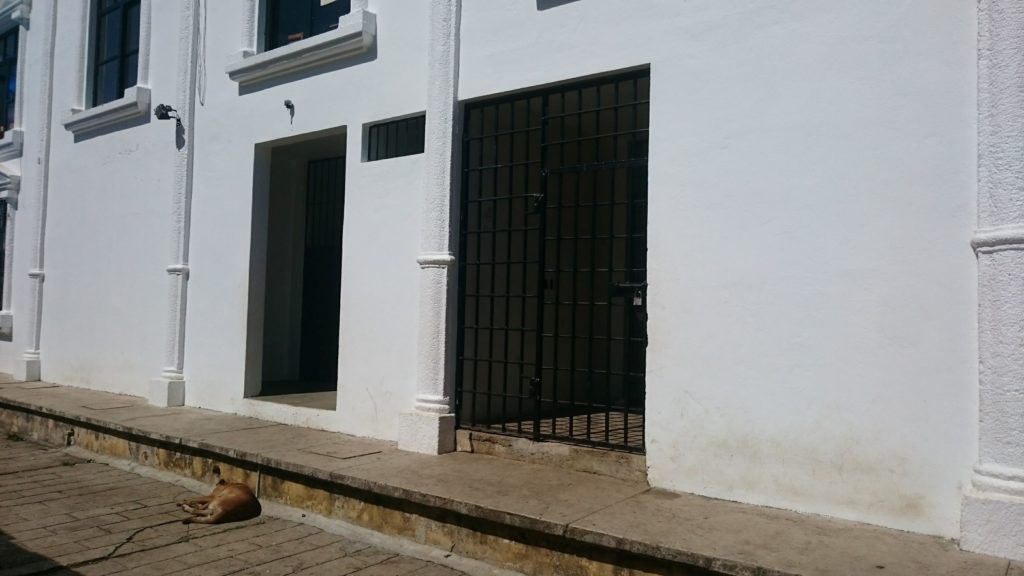
With law enforcement on our minds we visited the local jail. It consists of only two cells; one for males and one for females. The inside of the female cell is hidden from view. The male cell is on show for everyone in the town to see his shame. Sentencing is light though, with the greatest time behind bars set at a hefty three days. Things are definitely different around here!
"Only those granted permission can enter"
On to the church, this was a real highlight of the town. Religion is important to the Tzotziles and there will always be worshippers inside. This isn’t your usual service though. You’ll see shamans carrying out rituals, cleansing people with firewater, chanting and maybe even sacrificing chickens by wringing their necks. Incense fills the air and pine needles cover the floor, as a mariachi style band in full costume plays music and people conduct their prayers. It’s an experience like nothing else.

Leaving San Juan Chamula we travelled through the mountains to another village. Only those granted permission can enter. Here we saw the traditional weaving process used by the locals to make fabrics. We also had the opportunity to help make tortillas in a local home.
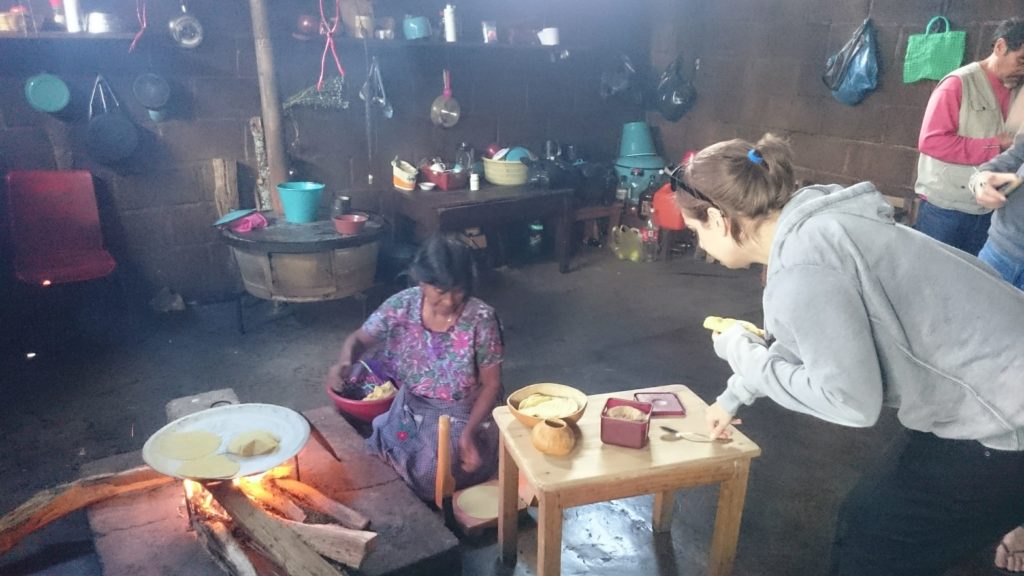
Throughout the trip we learned about the indigenous people’s ongoing struggles with oppression. It’s sad to hear how they have been forced off the lands and treated as inferior citizens when they have occupied the area for hundreds of years. The will of the people is a desire to live as they always have, but let society carry on at large around them. Greater forces seem to feel differently.
There are of course two sides to everything.
- Have you visit San Juan Chamula or any other of the indigenous villages in the Chiapas region?
- What was your experience?
SHARE THIS POST
How do I get to San Cristobal de las Casas?
San Cristobal de las Casas is easy to get to on an ADO bus. These buses travel from towns all over Mexico. You can check the timetable here. If you don’t have a Mexican bank card it’s not possible to book advanced tickets on their website. You can make reservations at any ADO bus terminal and seats are usually easily available.
If you arrive by bus, turn right outside the terminal and follow a straight road to town. This easy to follow road can be walked in 10 minutes. There are lockers at the bus terminal which cost $80 – $100 MXN pesos per day.
How do I get to San Juan Chamula?
For San Juan Chamula I can’t recommend Alex and Raul Tours highly enough. You could get a bus from San Cristobal de las Casas town centre to San Juan Chamula, but it would be difficult to have such a thorough, immersive and insightful experience. Their tours meet every day under the cross in San Cristobal de las Casas town square at 09:30 and 14:30. I emailed in advance to check there were no changes to the schedule, but they confirmed the tour always runs. There were only three of us on that day, and it still went ahead. You’ll return to the town square once the tour has finished.
How much is a tour of San Juan Chamula?
$250 MXN pesos per person. This includes the guide, transport and entrance fees (as a payment of $25 MXN pesos is required for the church). I’d recommend giving a tip at the end too. If you were to get a bus from San Cristobal de las Casas it will cost you $15 MXN pesos each way.
How long should I spend in San Cristobal de las Casas and San Juan Chamula?
The tour is in depth and takes around three and a half hours, so set aside half a day. You can easily spend the rest of the day (perhaps more) walking around San Cristobal de las Casas.